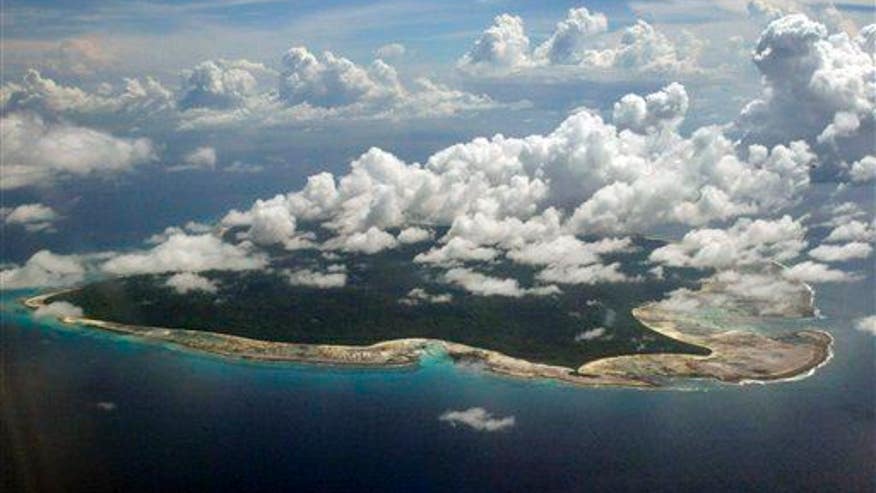Try to visit this island and you may not leave alive

Try to visit this island and you may not leave alive

In this Nov. 14, 2005, file photo, clouds hang over North Sentinel Island, in India's southeastern Andaman and Nicobar islands. (AP Photo/Gautam Singh, File)
Sometimes paradise is better off lost: Off the coast of India in the Bay of Bengal, a Manhattan-size island called North Sentinel Island boasts a deep green canopy of trees, stretches of sandy beaches, coral reef barriersand a population that's decidedly hostile to outsiders, who aren't likely to live long.
As Wackulus explains, the isolated indigenous tribe, one of the last of its kind on Earth, almost always attacks visitors. A little digging uncovered this story: After a night of drinking in 2006, two fishermen drifted too close to the island and were killed by the Sentinelese, who've lived there for 60,000 years.
A helicopter sent to recover their bodies was halted by tribesmen's arrows, the Telegraph reported at the time; the air generated by the copter's rotors revealed their bodies in shallow graves.
One of the earliest known encounters a century earlier ended when a convict who'd escaped from the neighboring Andaman Islands ended up on the island with his throat slit, the New York Times reported in 2012.
In 1967, the Sentinelesea Stone Age people but for the metal-tipped arrows carved from wrecked shipshid from an Indian government expedition, during which a marker was placed on the island, declaring it part of India.
Indian anthropologist TN Pandit's visits in the late 1980s and early 1990s proved more exciting. He left gifts of coconuts, knives, cloth, mirrors, and once a live pig.
The native hunter-gatherersbelieved to number between 50 and 400killed the pig and buried it in the sand, but only insulted Pandit's group. "They would turn their backs to us and sit on their haunches as if to defecate," he told the Independent .
India has since established a 3-mile exclusion zone around the island to protect both outsiders and the natives from disease. Survival International argues it's all for the best as the natives are "extremely healthy, alert, and thriving." They have fire and are believed to dine on fish, fruits, tubers, wild pigs, lizards, and honey.
Tags
Who is online
32 visitors

One of the earliest known encounters a century earlier ended when a convict who'd escaped from the neighboring Andaman Islands ended up on the island with his throat slit, the New York Times reported in 2012.
Wow
I think that this place will not be making it onto my travel bucket list.
Who knew that so close to modern "civilization" was such a group of natives.
Interesting article
I think that this place will not be making it onto my travel bucket list. I KNOW it won't be on my Bucket List!!!
I KNOW it won't be on my Bucket List!!!
I'm glad you found it interesting! I have never heard od this place before.
I am sure that there are people somewhere that will want to help these people who appear to not want any help
I hope that they can maintain their isolation, if that is what they want... How fascinating!
I just wonder how they are going to keep up their population aside from incest.
Imagine they won't be filming Survivor there any time soon...

I would expect they have their own language . It doesn't seem that is going to be studied any time soon .
Good point!
But that would certainly add new emphasis to the title wouldn't it?
India has done what central and south American countries should have done decades ago. Protect the Indigenous people that have had no contact with the outside world. But than again, there is lumber, gold and other valuables to be had, so who the hell cares about some Indigenous people in south and central America.
Kudos to India.
these 'uncivilized' people will likely still be able to exist. They are one with Mother Earth and she will help them survive. VERY good point RW!
I'm not sure either, but I'm assuming that after many they would all be related in one way or another, and would guess that after many years, some kind of medical problems would arise. Like I said, I'm not sure ...just guessing.
umm I think you may be right!